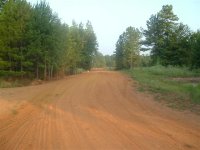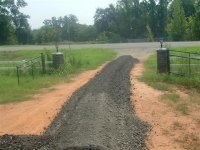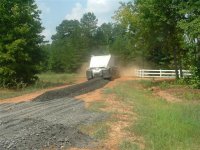Bird
Rest in Peace
</font><font color="blue" class="small">( Isn't the black clay what they call "caliche?" )</font>
No, caliche is an entirely different chemical composition. I inquired about buying some caliche once and was told (whether right or wrong) that it simply wasn't available in my area. It's supposedly a good road base. The local soil engineer who does most of the perk tests for septic systems called what I had "Wilson Clay Loam"; does not perk well at all. However, it grows crops, grass, etc. quite well with the right amount of moisture and a little fertilizer. It tilled well when the moisture was just right, but if a little too dry, it tilled like 1" to 2" crushed rock, and if a lot too dry, it either tilled like dust or not at all. /forums/images/graemlins/wink.gif And you really didn't like to dig in it when it was too wet (or walk in it) because it stuck to your tools, boots, etc. It was almost black when wet and light gray when dry.
No, caliche is an entirely different chemical composition. I inquired about buying some caliche once and was told (whether right or wrong) that it simply wasn't available in my area. It's supposedly a good road base. The local soil engineer who does most of the perk tests for septic systems called what I had "Wilson Clay Loam"; does not perk well at all. However, it grows crops, grass, etc. quite well with the right amount of moisture and a little fertilizer. It tilled well when the moisture was just right, but if a little too dry, it tilled like 1" to 2" crushed rock, and if a lot too dry, it either tilled like dust or not at all. /forums/images/graemlins/wink.gif And you really didn't like to dig in it when it was too wet (or walk in it) because it stuck to your tools, boots, etc. It was almost black when wet and light gray when dry.



